A passion for racing little electric projectiles
One of a series of posts about the racing antics we got up to before arriving in competitive karting. Check the overview for links to other posts in the series.
Think of a seminal moment in your life that changed everything.
For me, one of those moments was when David pulled out his Scalextric slot car racing set: little electric projectiles that totally changed my life’s focus.
From that moment on, I wanted to be a racing car driver. I loved the competition, I loved building our own cars, and most of all I loved trying to come up with new ideas to try and out-perform each other.
It also opened my eyes to the real racing world. I remember watching black-and-white television coverage of LeMans as a small boy in Scotland and playing with a fairly large 1950s Mercedes F1 toy car (with working steering!). But I’d never given the sport much serious thought before and now I was soaking it all up like a sponge.
It was 1970 and, in the real world, race car builder Colin Chapman had just designed the Lotus 72 and aerodynamics and innovation was taking off and changing race cars forever. There was lots to soak up.
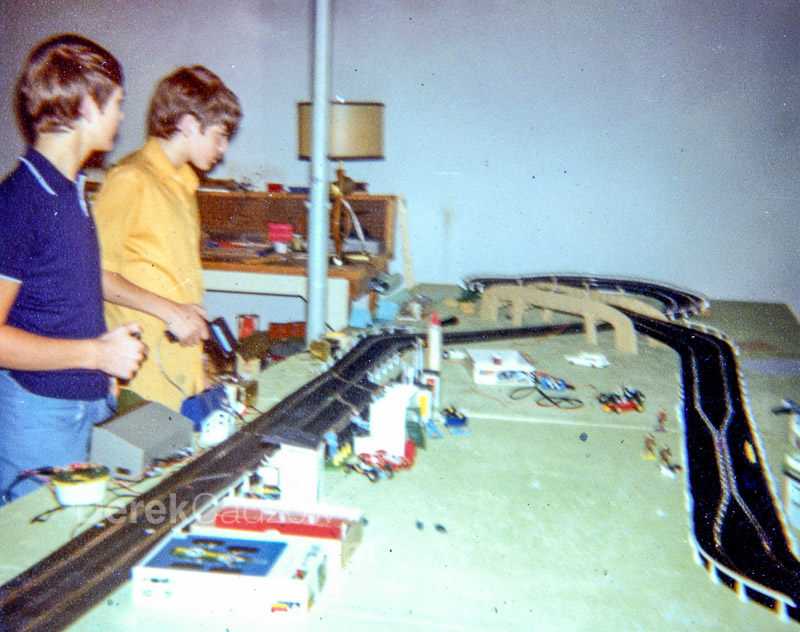
With Scalextric, it was more modeling than pure racing. You could buy buildings, figurines, signs, pit stop buildings, scoring towers and all sorts of things if you wanted to. We did a bit of that, but didn’t go wild about it.
The competition was the thing for us. David was often quicker and won more than his fair share of races. Soon a third friend, Don, joined us and I had two competitors to worry about.
While visiting family in Britain, my grandfather took me for my first visit to Brands Hatch and then to fabled Tottenham Raceways where I saw my first Mura slot-car motor, which revved at 20,000 rpm!
Back in Canada, my Dad did his part to feed our frenzy. He drove us almost every weekend to the hobby-mecca of early 1970s Ottawa: Hobbyland.
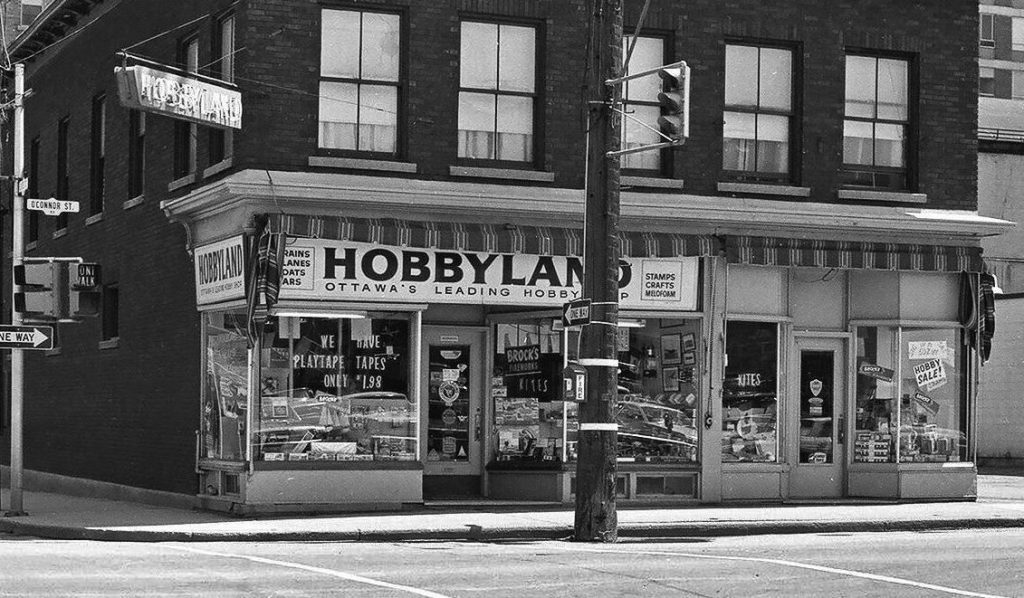
It was there we each bought our first upgrade from Scalextric equipment: I got a Monogram 1964 Ferrari and David bought the other car in the series – the Lotus 33. Don stayed with the Scalextric Lotus Indy “powersledge” which he was convinced would give him the edge.
Being English, David was always promoting the English-ness of his Lotus 33. It was only later that I learned that the driver of the car, Jim Clark, was Scottish. What I could have done with THAT information!
It became a common passion for us. On a winter’s day when a Canadian blizzard kept us home from school, I simply had to make the motion with my thumb of pressing a controller to David across our snow-covered yards and he knew right away we were in for a day-full of slot car racing.
Our first exposure to a pure racing track was at Fred Zufelt’s home for a major event. We didn’t have cars competitive enough to enter, but it was the first time we realized there was something beyond commercial Scalextric plastic track.

Soon, we were visiting Fred’s on a regular basis and competing with the local club.

(By the way, I didn’t win this trophy; in fact, I didn’t even race on this day. My Dad always liked to get the trophy in the picture and I was always embarrassed.)
In early 1971, David was the first to succumb to the lure of a scratch-built track in his basement.
Like Fred’s track, the different surface was faster and could handle sponge tires and the goop that would make them stick. He built the tables and routed three slots for the cars, which allowed David, Don, and I to all race at the same time — no more round-robin heats!

We were still young and using a router wasn’t something we knew much about. Living next door, I always knew when David was working on his track by all the smoke that literally flew out of his basement windows. We didn’t know that a router should move along pretty quickly, otherwise the wood sizzled and burned from the spinning router blade. Also, we found that the thickness of the tabletop wood mattered so that the router blade didn’t go all the way through — live and learn!
The three of us had many fine races on that track and as we learned to build our own cars by soldering brass and steel together, the competition spread from just the track to the workshop where we’d see who could out-build the others with faster cars.
Later, I built my own track and learned from David’s experience, using thicker tabletop wood and making it four lanes instead of three.
(Click on the pictures to see larger versions of the images)
I recall that we raced on Fred’s track in a nine-hour endurance race. It included three hours in the light, three hours in the dark to simulate night racing, and then three hours in the light again. We were 15 or 16 years of age and David had prepared the chassis and motor and I worked on the lighting system and body livery.
We made it Mark Donohue’s beautiful blue and yellow Sunoco Ferrari 512M and I’d rigged up headlghts and a cab-light in the driver’s compartment. For our unfair advantage, we had a simple switch on the outside of the body — we just quickly twisted two wire ends together and the lights turned on, powered by the electric motor. We hoped this would make for a quick transitional pit stop.
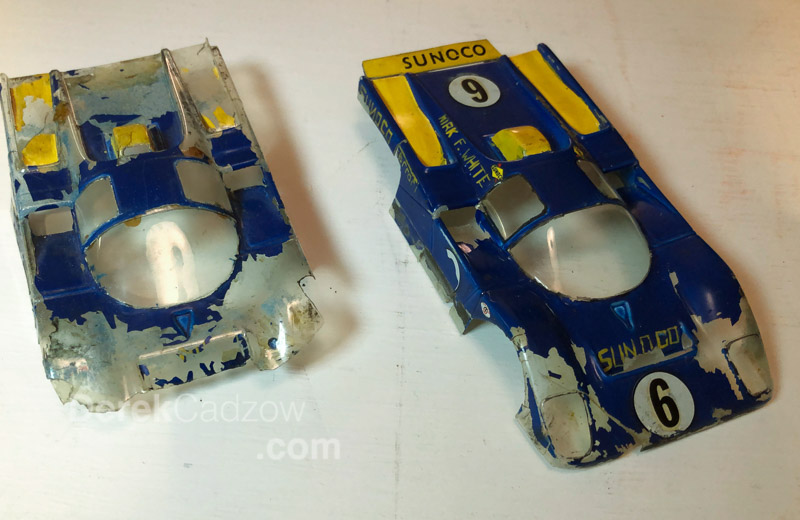
Drivers changed each hour between David, Don, and I.
Right away things didn’t go according to plan. Due to lots of “off-course excursions”, the front end of our car didn’t last beyond the first three hours and our headlights were GONE by the time the night period came. The cab light was all we had left and it was just bright enough to let us continue.
Also, the advantage we’d hoped for in the light-to-dark transitional pitstop didn’t materialize because the organizers stopped the race for the transitional period to give everyone time to turn their lights on. So our quick light system didn’t buy us anything. Ugh…
Nevertheless, we did well in the race. We were running third with an hour to go and fourth place was only 22 laps behind us (at around 5 seconds a lap, 22 laps was not much of a gap). It was a tense final hour but we held on to third place by the skin of our teeth.
Soon after, Don’s family moved away to the other side of Ottawa and it was just David and I.
Sometime in 1971, Mr Zufelt (Fred’s Dad) and my Dad drove us all to Toronto for an event at the Herron Chev-Olds car dealership. The track (a big one) was on the second floor of their building and I think it was either the Ontario or Canadian championship event.
(Click on the pictures to see larger versions of the images)
(Please note, that we did NOT win the big trophy as seemingly indicated in the picture; as always. It was my Dad’s idea, but now I’m glad he shot it.)
We worked madly right up to the event to prepare our scratch-built cars — in fact, we were still getting ready in our hotel room the night before the race. I had a ’71 Tyrrell for the F1 class and both David and I had March 707 cars for the CanAm race.
We all stayed in one room — the fathers got the beds and the rest of us were in cots. By this time, Fred and Dave were dabbling in radio-control car racing too and Fred woke us up by talking in his sleep — “Damn crystals, damn crystals” he repeated, probably dreaming of his radio equipment. Then somebody farted loudly and Fred yelled “Good morning!” and we were off to the races — literally.
We’d actually managed to find a sponsor and had “Taylormade Gears” plastered over the rear wing of both cars. I think the shop had actually wanted us to put THEIR name on the cars instead of the merchandise, but they had given us free gears and that’s what got advertised…
We didn’t do that well in the event against all the hard-core slot car racers that were there — in fact, I almost made an fr-enemy out of Ed Costa when my Tyrrell kept launching from one lane onto his and messing up his race. However I apologized and he was very good about it. I think we actually became acquaintences after that.
During a race his focus was intense. Fred says that he would rattle his controller so much while racing that the behavior got an official name: the “Costa shake”.
Soon we were looking at radio-control cars and our slot car tracks lay idle. By the time I’d finished with RC cars and was looking into karts, I had sold my track to a group that were bent on starting a club. I was glad to not have to trash it as I’d put so much work into it — and I needed the space for my new kart. 🙂
Read the next installment in the series: It’s just a soap box – what could possibly go wrong?

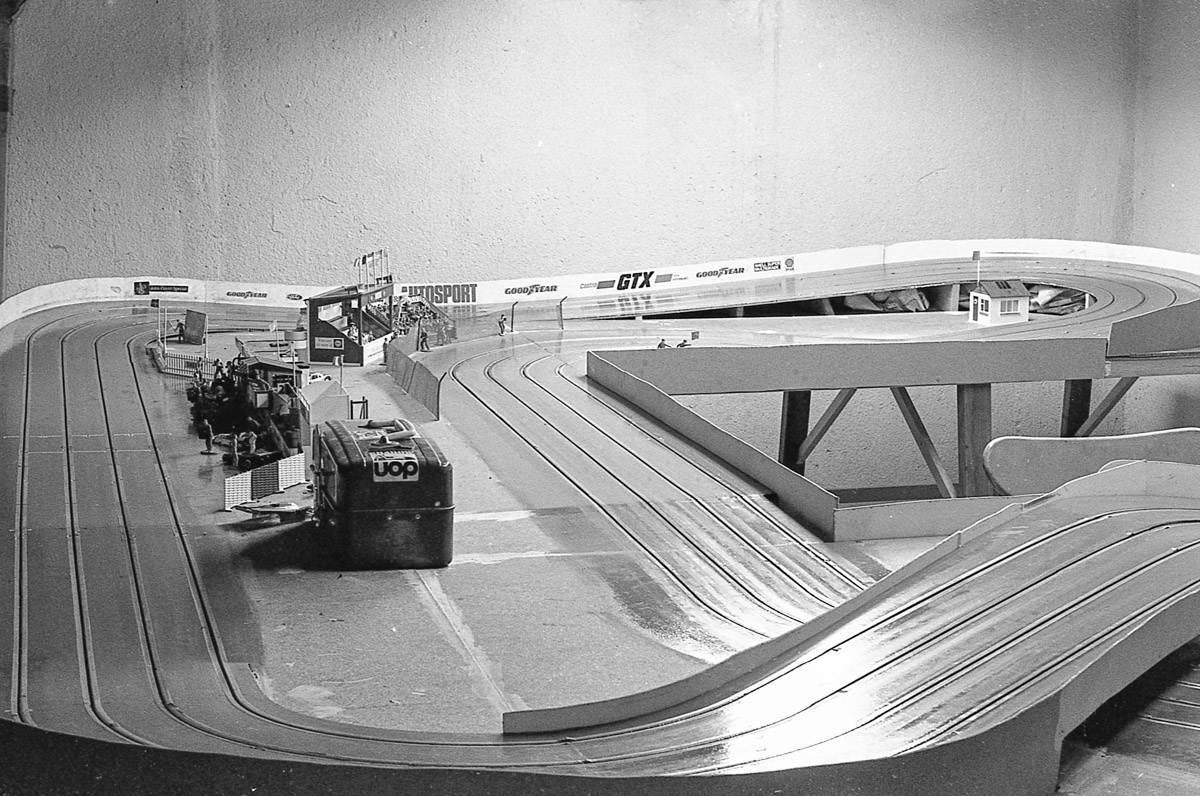



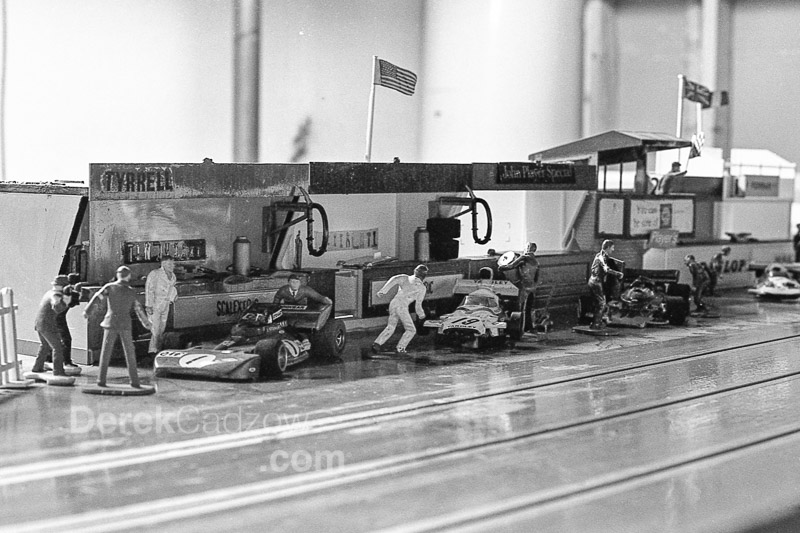
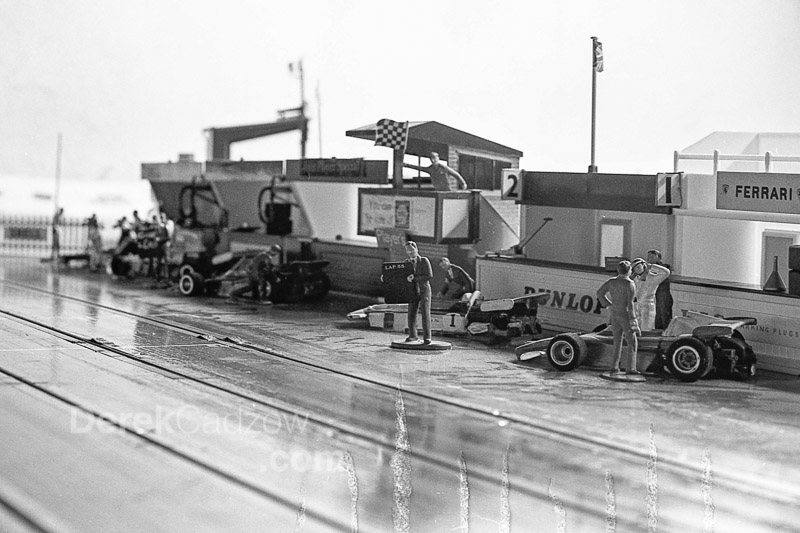






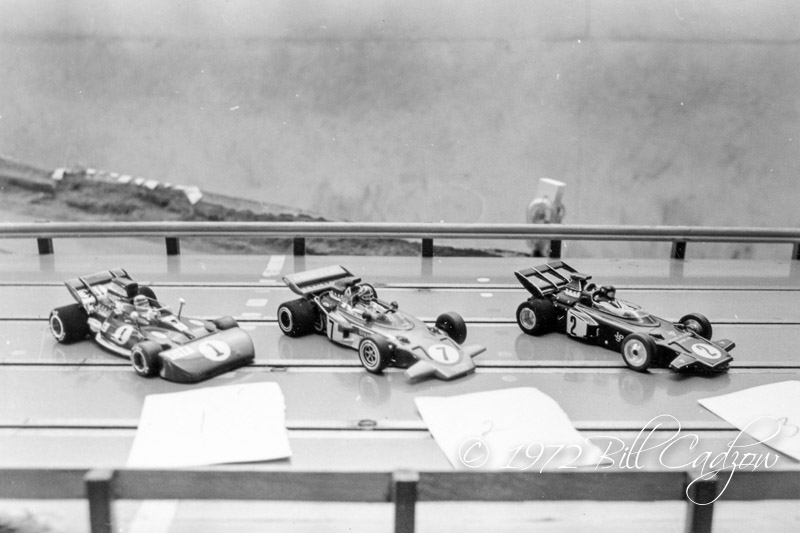
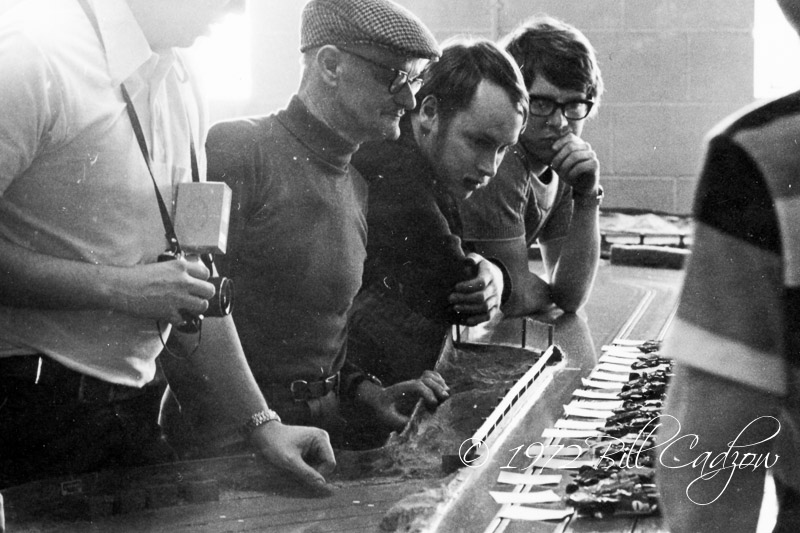
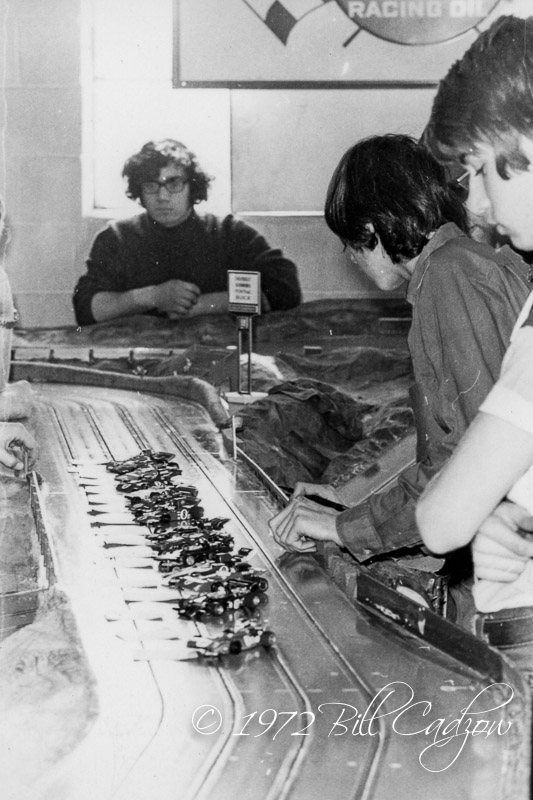
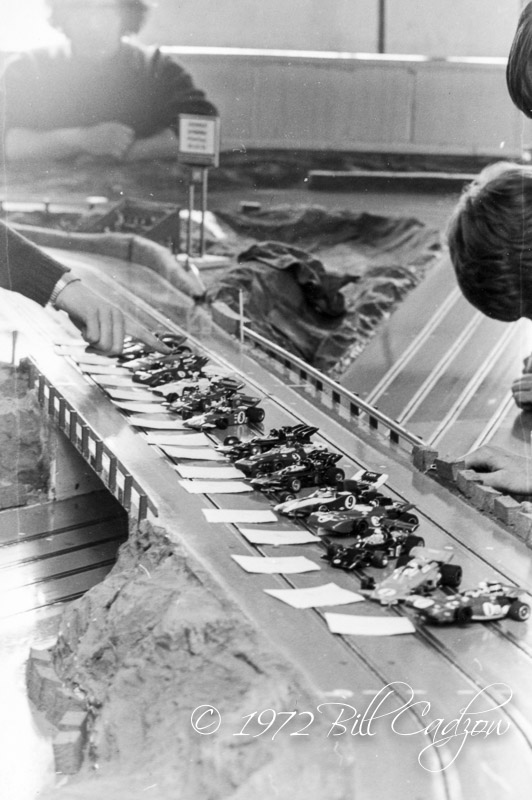
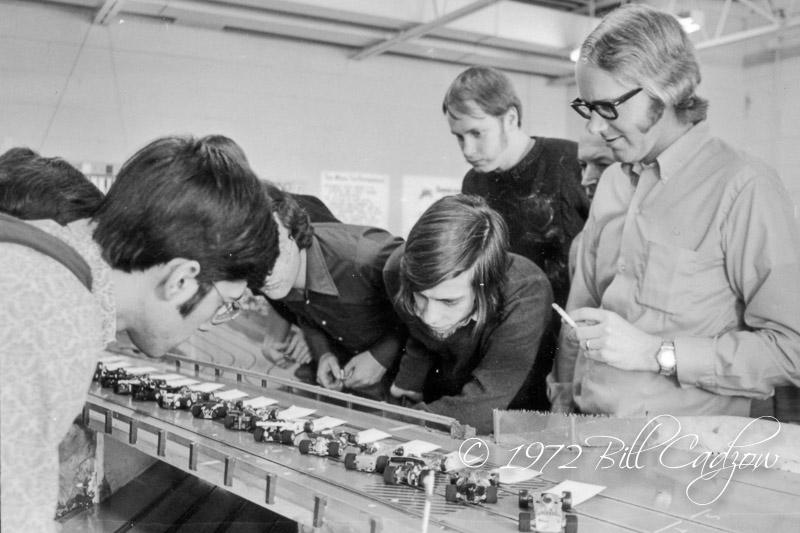

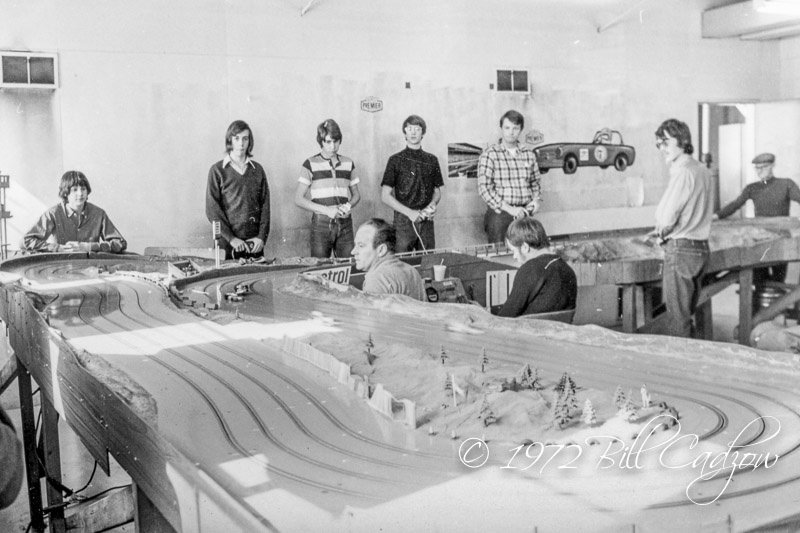
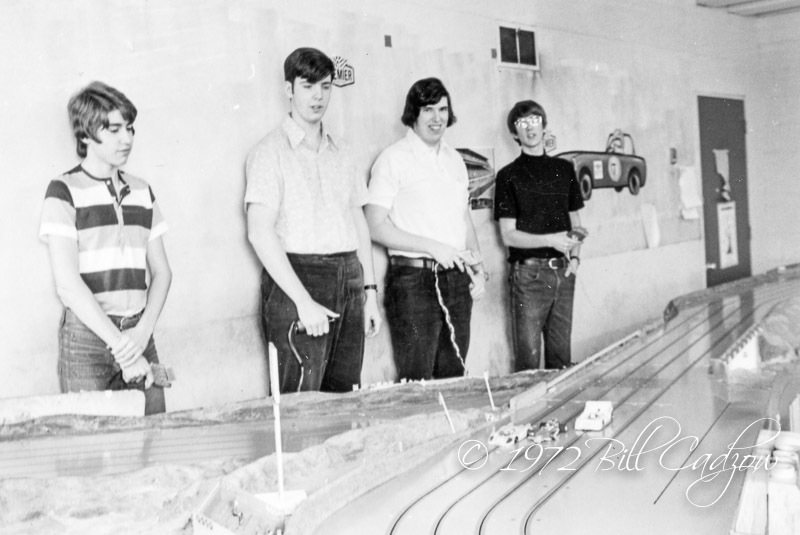
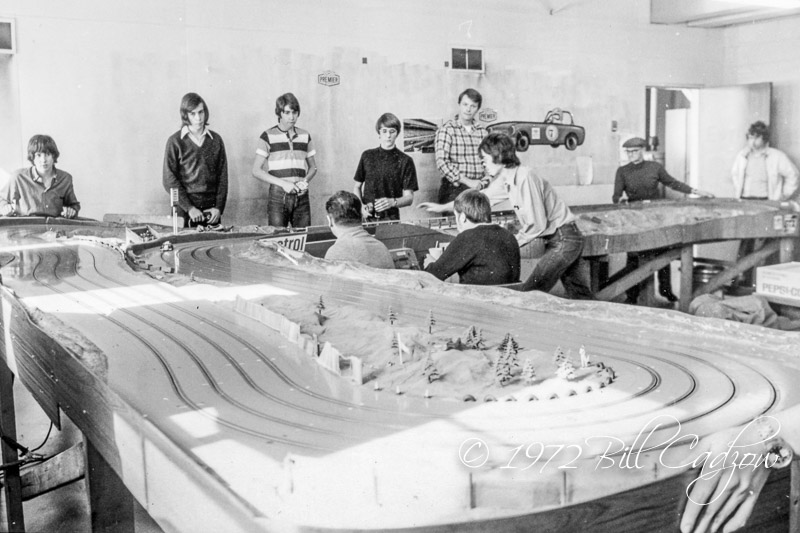
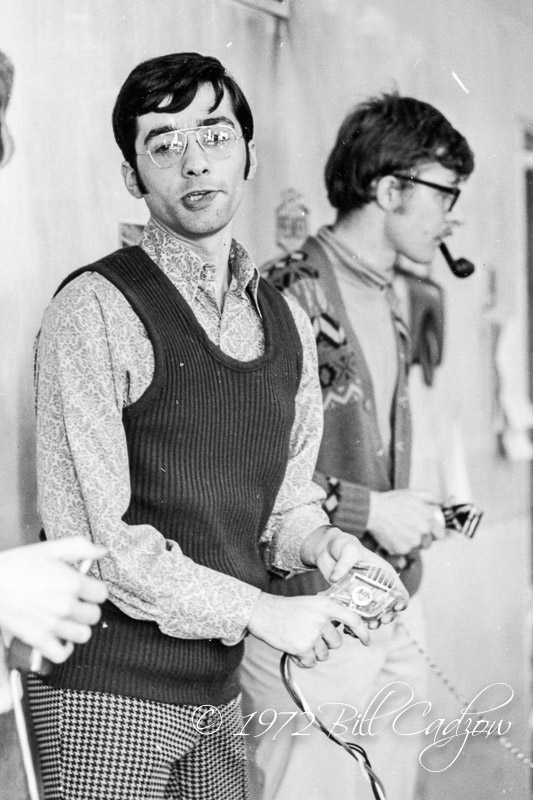


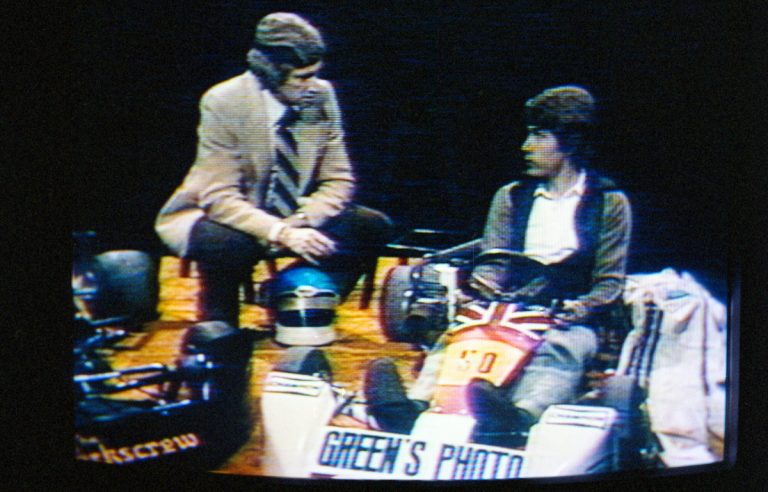

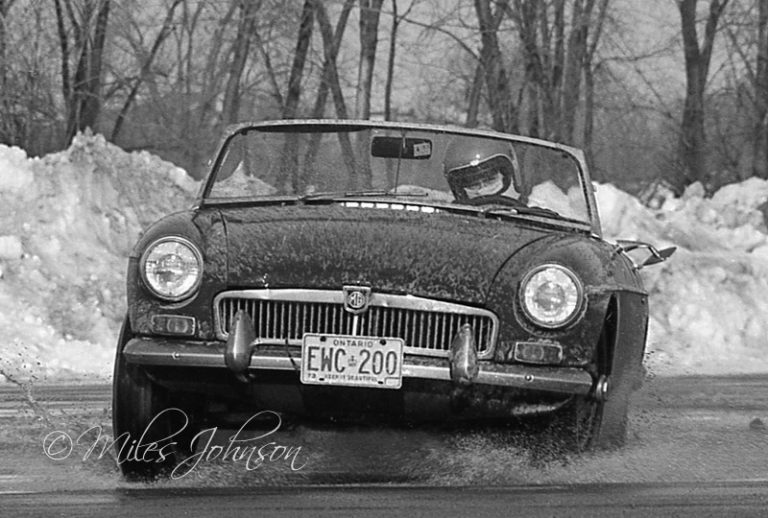
As I was trying to say, I am very jealous of your youthful experience! My first exposure was, like so many, through the pages of R&T and HMMIII, with his exquisite tales of Grand Prix racing! I knew I needed to be a GP driver! That led me and a friend to hitchhike to Le Circuit Mt. Tremblant (St. Jovite) in the trunk of a car with neither my parents knowledge nor awareness.
Sadly, I had no idea where to go or start….and when I finally did, I realized I was an old man in racing terms! I did, however, when I drove my Dad’s Chrysler convertible, try “stupidly” to make it a GP drive each time, no matter how brief!
But Ron, you DID get your butt into a Formula Ford car and into races… I’d say that was pretty good progress. 🙂